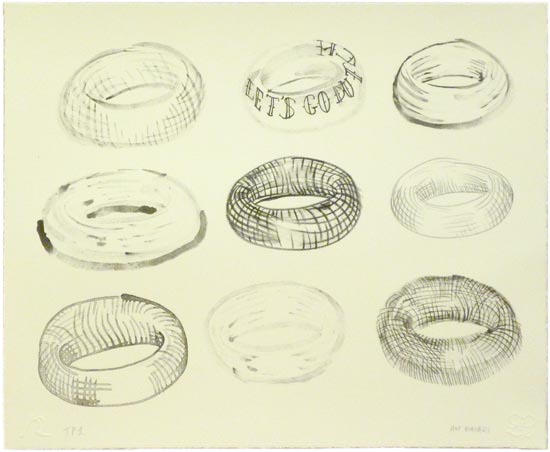“The circle, is the synthesis of the greatest oppositions. It combines the concentric and the eccentric in a single form and in equilibrium. Of the three primary forms, it points most clearly to the fourth dimension.” – Wassily Kandinsky
Kandinsky wrote in his essay Concerning the spiritual in art “Religion, in the sense of awe, is present in all true art.” For Kandinsky, painting was above all deeply spiritual ("geistig"). He was highly influenced by the sensorial properties of colour and sound, and sought to visualize these properties through increasingly abstract compositions.
As a painter, Kandinsky saw himself as a prophetic figure, whose mission was to translate the most profound human emotions into universally comprehensible symbols and visual sensations. He saw music as the most transcendent form of non-objective art, and strove to produce similarly object-free, spiritually rich paintings.
During his tenure at the Bauhaus School in Weimar, Kandinsky refined his earlier, romantic philosophies of intuitive painting toward a more reasoned construction of composition through geometrical elements.
9 Doughnuts, the first lithograph of the series, makes reference to Kandinsky’s widely reproduced painting "Farbstudie: Quadrate mit konzentirischen Ringen" ("Colour Study: Squares with Concentric Circles") although at first glance, it is perhaps more akin to Kandinsky’s monochromatic work ‘Thirty’,1937, in which the picture plane is divided into thirty squares, each displaying various forms of mark making. As the first in a series of four lithographs, 9 Doughnuts is itself a study, a rehearsal if you like, in the ‘spirit’ of Kandinsky. At once an exercise - devoid of colour as an emotional trigger - in signifier and signified and, also representing a test – exploring the behaviour of the (litho) stone to a variety of media.
The signifier here is the doughnut, (torus, or concentric rings) repeated nine times. What is signified can shift in each example. For instance one doughnut bears the inscription “let’s go Dutch”, another fades towards the liminal realm. A constant signified in all however, is the circle as symbolic of the universal concept of wholeness and a combination of opposites; the solid defines the void and vice versa.
"The relationships in art are not necessarily ones of outward form, but are founded on inner sympathy of meaning." - Kandinsky, Concerning the spiritual in art, 1911.
9 Doughnuts is not only sympathetic to Kandinsky and Expressionism’s tendency toward the spiritual but also with the later language oriented works of Smithson (Spiral Jetty), Johns (Zero Nine) and the stereomatic reproductions of Warhol. The doughnut references a span in human history that dates from the sun worship at the dawn of man to the butterscotch fudge of Krispy Kreme and beyond to theoretical physics’ ‘wormhole’ and ‘donut’ theories.
Most of all 9 Doughnuts will look as good in your living-room as Kandinsky’s Colour Study: Squares with Concentric Circles any day of the week.
AM



